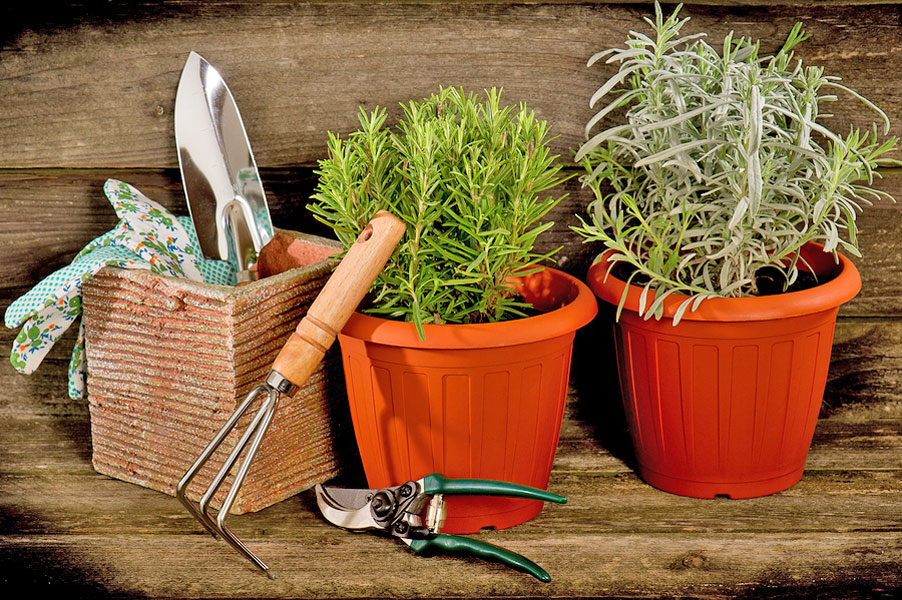Plant something that is both easy to grow and good for you – your own herb garden. Herbs thrive in varied conditions, from their own bed in a garden to a small sill inside your home. Dig in the dirt and plant some herbs that will bring a sense of achievement and numerous nutritional benefits.
The top 5 herbs to plant in and around your garden are:
Basil
Plant basil and reap the rewards all year long; Make sure to prune the blooms that appear on your basil, and keep in well-drained soil. Provide filtered sun, such as in a window or under an arbor. You can also allow the basil to flower and utilize it as an ornamental plant for your beds and gardens. Got a lot of basil? Puree it with pine-nuts, parmesan, and oil for fresh, homemade pesto sauce.
Parsley
Parsley is an effective way to battle bad-breath; just chew on a sprig of refreshing and nutritious parsley, both curly and Italian varieties. Use parsley in your landscape to edge and border other plants; it is super-low maintenance. Parsley is not prone to pests but is full of vitamins which makes it a viable green in salads and slaws.
Thyme
Thyme is hardy and resilient, the perfect aromatic ground-cover for your beds and lawns. The tiny violet flowers and small leaves are lovely and easy to harvest. The plant is a perennial that is packed with vitamin C which can boost your immune system. Coming down with a cold? Brew a cup of thyme tea to combat your symptoms and prevent sickness.
Mint
Mint in the garden will make your greenspaces smell amazing, plus you will be surprised by how many opportunities you find to use the mint that you grow. Mint is hardy, growing in most climates and conditions, though it is less tolerant to drought. Provide part-sun and well-drained, moist soil. Mint does well in containers and pots, which makes it perfect for indoor gardening or for those that lack ample greenspace. It can become almost invasive, taking over wherever it is planted which could make it a viable and fragrant border for beds.
Rosemary
There is something so comforting about a hardy stalk of rosemary growing in the garden; these plants typically reach around three-feet in milder climates and rosemary plants deter and prevent pests. The aroma is distinctive, and the plant yields tiny light-blue blooms during winter until spring. This herb’s leaves are more like needles, growing greenish-grayish sprigs that can add so much to your meals. Also, rosemary aids in digestion and helps with irritable bowel syndrome.
Freezing herbs is probably the best way to preserve them after harvest and freezing maintains the herb at peak flavor. Make sure that your herbs are dry before placing in airtight bags for the freezer. You can also dry your herbs with a food dehydrator, though the flavor mellows quite a bit.
Treat yourself to a simple and savory herb garden this spring. Talk to the professionals at Terra Bella Garden Center, a local garden & landscape design center in Charleston, to learn more and schedule landscaping services.


